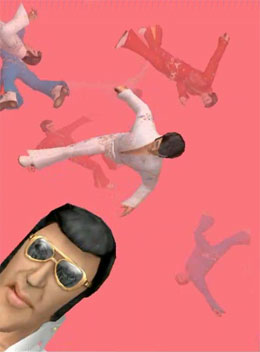
DeResFX.Kill(KarmaPhysics < Elvis); (2004, 6.8 MB, 1:54 min.)
“A modification of the bloody science fiction first person
shooter computer game Unreal 2003.”
By Brody Condon.

DeResFX.Kill(KarmaPhysics < Elvis); (2004, 6.8 MB, 1:54 min.)
“A modification of the bloody science fiction first person
shooter computer game Unreal 2003.”
By Brody Condon.
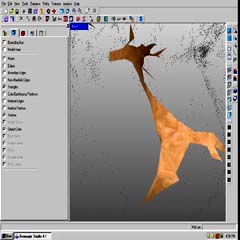
treee (2006, 2.28MB, 1:03 min)
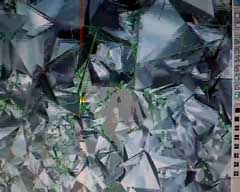
treees 3 (2006, 5.86MB, 38 sec)
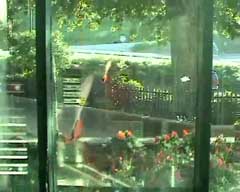
treees 8 (2006, 9.15MB, 58 sec)
“similar to a scanning electron microscope, two images of a moving tree
with enormous detail were stitched together, warped, merged, and
analyzed at every stage. the result is a planetary configuration; one can travel
for at least an hour or two through the detailing. at times threads or
tubes appear; at times there are planes, sharpened edges, odd holes and
gaps. a tetrahedral mapping was employed.
it is this acute exploration of acute angles of inner worlds that
fascinates me. the mp4 file is small and an enormous amount of detail
is lost, but you get the idea. there are videos as well of course.
here is the resurrection of encapsulated movement-into-landscape of a
five-story tree outside the virtual environments laboratory at west
virginia”
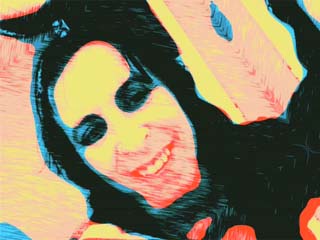
Please Don’t Look Like A Pear (2010, 10 MB, 3:22 min)
I love Donna Kuhn’s work.
I’ve rhapsodised about it here before, so I’ll just note, first,
that she continues to develop in the most thoughtful & interesting of ways
& second that this video is very funny, poetic
& scarier than most horror movies.
( Donna: ‘people don’t believe that these are completely unembellished
craigslist personals ads’)
To do all three – a coup!
More soon please Donna!
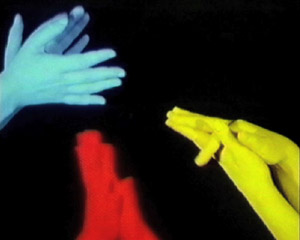
Applause (2010, 104 MB, 1:02 min)
Last week we showed some of Kerry Baldry’s curatorial work,
now here’s one of her own pieces.
Says Kerry:
“Applause is a piece of work made on 16mm film.
Using superimposition and coloured gels Applause has been edited in camera …”
& its a smart & winning piece which punches above its weight.
It looks great & there’s something about the way the visuals work
that really illuminates the sound – the..er..um..applause-ness –
of the applause & this in turn directs us back, carefully, to the visuals.
(& both make us ponder it as a social phenomenon)
The piece made me listen attentively, mindfully, & then look &
listen & think & then do all three again.
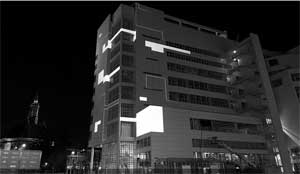
Interview with Pablo Valbuena (2009, 43 MB, 3:46 min)
Studio Banana TV interviews visual artist and architect Pablo Valbuena.
After working in digital media designing virtual architectures for videogames,
he currently looks for new ways of using light to introduce the dimensions of
time and movement in urban spaces, altering the perception of physical space
through projected virtual realities.
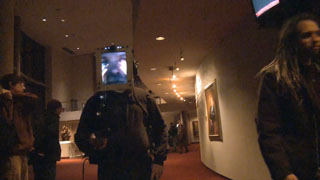
Monster/Identity Prosthetic (2009, 54 MB, 1:13 min)
Documentation from last years Spark Festival of a rather splendid
installation by Todd Polenberg.
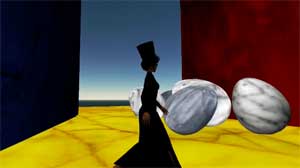
Unbroken Eggs – Monument to Luciano Fabro (2007, 13 MB, 3:30 min)
Physical scripted environment.
A Second Life performance by Gazira Babeli.
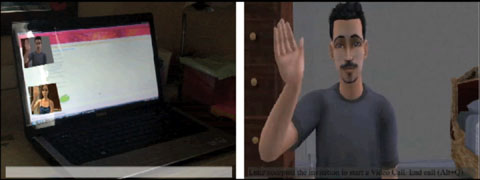
Ashleigh Smith – Impossible Conversations (2010, 75 MB, 2:30 min)
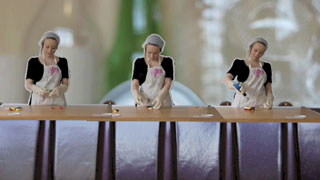
Emma Haggis – Out of Sight, Out of Mind (2010, 118 MB, 2:18 min)
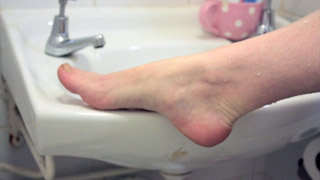
Lucy Mills – Response (2010, 108 MB, 2:02 min, silent)
So, first, I should say, Writtle is where I taught this year, but it cuts both ways:
I wouldn’t post these pieces by graduating students here on DVblog unless I
thought they were all great, which I do.
They’re also diverse, in a fascinating way.
There’s Ashleigh Smith’s haunting – stays with you long afterwards – game/real life hybrid,
Lucy Mills beauty industry critique – half mash-up, half rather brave performance,
(It’s interesting the way that all three pieces incorporate, to
some degree, elements of self performance) and Emma Haggis’s superbly made
and utterly captivating stop motion environmental piece.
In each case one can see a personal language well into its development.
(All these pieces or variants/derivatives thereof formed part of larger
installations; I’m impressed by the naturalness & lack of self consciousness
with with these three move between modes of working/presentation)
I hope they’re all still making work in ten years – given this
starting point then that would be a treat in store.
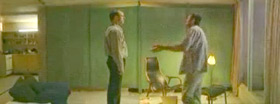
Win, Place or Show (clip) (1998, 1.6 MB, 47 sec.)
Two men are having a discussion in a small apartment. The scene,
lasting only six minutes, is filmed from twenty camera positions.
A computer program then produces some 200,000 possible combinations
of images and sounds, so the viewer always sees a different version of the story.
Win, Place or Show questions our conditioned viewing behaviour.
video installation by Stan Douglas.
from ZKM Videosammlung.